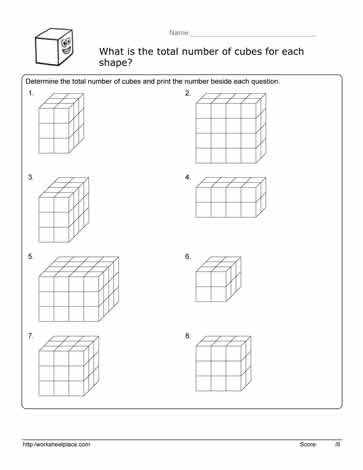5 Ways to Master Volume With Cubes Worksheet

Understanding Volume with Cubes Worksheet
When it comes to teaching children about volume, using cubes is one of the most effective methods. Cubes provide a tangible way for students to visualize and calculate the volume of different objects. In this article, we will explore five ways to master volume with cubes worksheets, along with some practical tips and examples.
Why Use Cubes to Teach Volume?
Cubes are an excellent tool for teaching volume because they:
- Provide a concrete representation of volume
- Allow students to visualize and calculate volume easily
- Can be used to demonstrate various volume concepts, such as cubic units and capacity
- Are easy to manipulate and count
5 Ways to Master Volume with Cubes Worksheets
1. Counting Cubes
Counting cubes is a great way to introduce students to the concept of volume. By counting the number of cubes in a rectangular prism, students can calculate the volume. Here’s an example:
Example:
| Length | Width | Height | Volume |
|---|---|---|---|
| 3 | 2 | 4 | ? |
To calculate the volume, students count the number of cubes:
3 x 2 x 4 = 24 cubes
Volume: 24 cubic units
2. Building Rectangular Prisms
Building rectangular prisms with cubes helps students understand how volume is affected by length, width, and height. Here’s an example:
Example:
Build a rectangular prism with a length of 5 cubes, a width of 3 cubes, and a height of 2 cubes.
Volume: 5 x 3 x 2 = 30 cubic units
3. Calculating Volume with Missing Dimensions
To take it a step further, students can calculate the volume of a rectangular prism when one or two dimensions are missing. Here’s an example:
Example:
A rectangular prism has a volume of 48 cubic units. If the length is 6 cubes and the width is 4 cubes, what is the height?
Solution:
48 ÷ (6 x 4) = 48 ÷ 24 = 2 cubes
Height: 2 cubes
4. Word Problems with Cubes
Word problems with cubes help students apply their understanding of volume to real-world scenarios. Here’s an example:
Example:
Tom has a bookshelf with 5 shelves. Each shelf can hold 8 books, and each book has a volume of 2 cubic units. What is the total volume of books that Tom can store on his bookshelf?
Solution:
5 shelves x 8 books/shelf x 2 cubic units/book = 80 cubic units
5. Mixed-Unit Word Problems
Mixed-unit word problems challenge students to convert between different units of measurement. Here’s an example:
Example:
A fish tank has a volume of 36 cubic feet. If 1 cubic foot is equal to 7.48 gallons, how many gallons of water can the fish tank hold?
Solution:
36 cubic feet x 7.48 gallons/cubic foot = 269.28 gallons
📝 Note: Be sure to check students' understanding of unit conversions before assigning mixed-unit word problems.
Tips for Teaching Volume with Cubes
- Use a variety of cube sizes to accommodate different learning styles and abilities.
- Provide opportunities for students to explore and discover volume concepts on their own.
- Encourage students to use visual aids, such as diagrams and drawings, to help with calculations.
- Use real-world examples and word problems to make volume more relevant and interesting.
What is the best way to introduce volume to students?
+The best way to introduce volume to students is by using cubes. Cubes provide a tangible way for students to visualize and calculate the volume of different objects.
How can I make volume more engaging for my students?
+You can make volume more engaging for your students by providing opportunities for them to explore and discover volume concepts on their own. You can also use real-world examples and word problems to make volume more relevant and interesting.
What are some common mistakes students make when calculating volume?
+Some common mistakes students make when calculating volume include forgetting to multiply all three dimensions, confusing length, width, and height, and failing to convert between units.
By following these five ways to master volume with cubes worksheets, you can help your students develop a deep understanding of volume and prepare them for more advanced math concepts. Remember to provide opportunities for exploration and discovery, and to make volume more engaging and relevant through real-world examples and word problems.
Related Terms:
- Volume by counting cubes Worksheet
- Volume Worksheet grade 5
- Volume of sphere worksheet
- Volume worksheet grade 7



